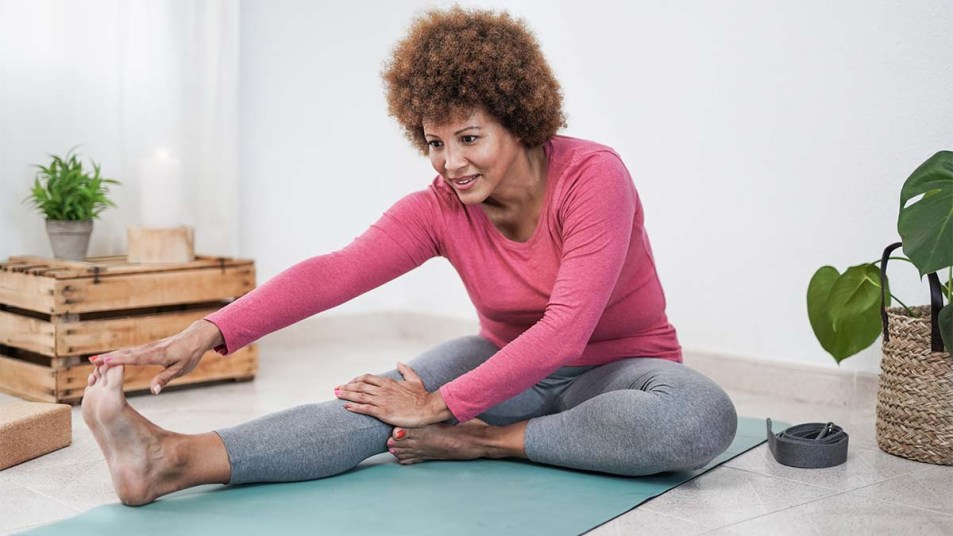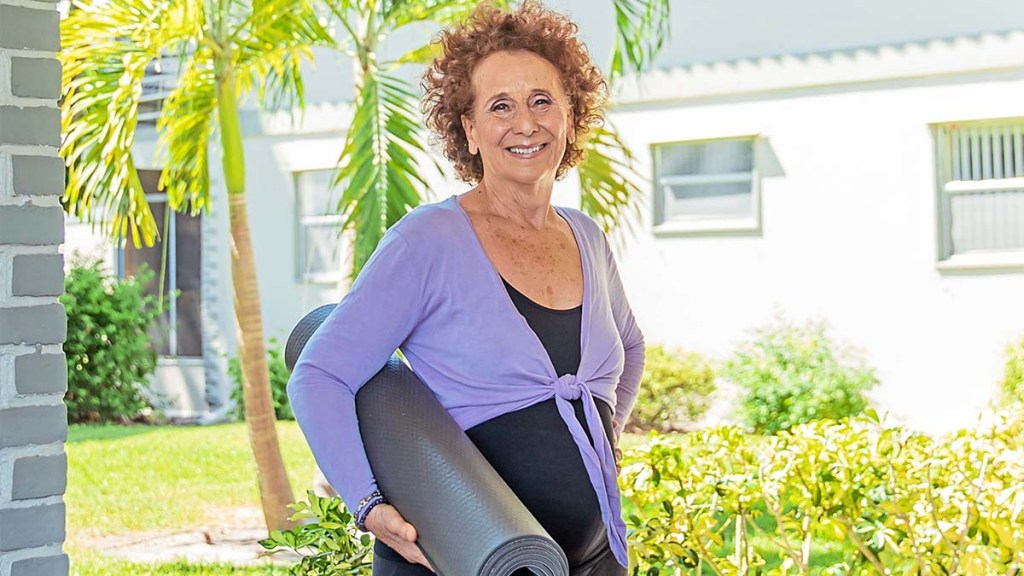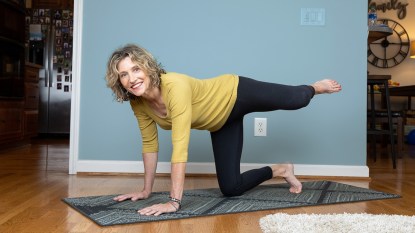Doing This Daily Activity Helped One Woman Get Rid of Headaches and Jaw Pain

Another bad semester,” Sharon Heller’s supervisor sighed, sifting through her student evaluations. “You’re a great psychology teacher, Sharon, but you keep getting low marks from your students.”
Sharon’s heart fell, knowing exactly why this was happening: Constant jaw pain made it hard for her to open her mouth to eat, talk or smile. Even praise for her college students’ work came out with a grimace. As if the pain wasn’t bad enough, now Sharon feared her job was on the line. Hurrying out of her meeting, Sharon slumped on a bench, one thought on her mind: I wish I could just smile like a normal person!
Decades of Agony
“On a warm spring day in 1987, my life changed forever,” recalls Sharon. “Exhausted after a day and night of teaching, I had tripped, tumbling down a flight of stairs and crashing onto the right side of my head. Though painful, it didn’t seem like a big deal. I didn’t have a concussion or any serious head trauma, just a cut across my eye.
“But from that day on, I struggled with poor balance, vision issues, sensory issues and, worst of all, constant pain in my left ear and jaw. I would also hear a clicking sound when I opened my mouth or chewed.
“My dentist determined it was TMJ syndrome, a dysfunction of the temporomandibular joints. She explained these joints are on either side of your jaw and move it by acting like a sliding hinge, connecting your jawbone to your skull. My fall had traumatized that joint, leaving me in constant pain. It caused the muscles in my jaw to tighten to the point that it was hard to talk or chew anything but soft foods. To make matters worse, the stress brought on by my TMJ caused me to clench my jaw, and soon I had developed debilitating tension headaches.
“I tried an expensive bite plate and jaw exercises, to no avail. Pain medication was useless, so I decided to test my luck with a chiropractor.
“‘You need to do all you can to relax,’ he told me. ‘TMJ is related to being emotionally constricted, and stress just makes it worse.’ Relax! I thought. Ha! How am I supposed to do that? After years of suffering, I was losing hope of ever feeling better.
Rediscovering Joy
“Casting around for ideas, I was intrigued when a friend recommended yoga. I had heard it was great for relaxation, but I’d never thought of it as a cure for pain. Skeptically, I signed up for a class, and by the end, when I entered corpse pose, I was amazed at the difference. Lying on my back, with my eyes closed and my arms and legs spread, my headache and the ache in my jaw were gone!
“Within a week, I was able to chat after class with my fellow yogis and even found myself able to smile and laugh. As I continued practicing, my yoga teacher explained that poses like the ‘heart opening’ posture, which focuses on opening the chest and releasing tension in the neck and jaw, were especially helpful. As it turned out, so was the breathing technique I was coached to do with each pose, wherein I put my tongue on the tip of my teeth so my jaw isn’t clenched.
“With each passing class, the headaches and jaw pain lessened and I began to experience ‘yoga bliss.’ Most yogis explain it as a spiritual experience, but as a psychologist, I wanted an explanation for this euphoria from a neurological perspective.
“In yoga, you move through a series of poses, or asanas, that involve three primary senses of body awareness: input into the joints and muscles, balance from moving in a different plane and pressure applied to your body against a floor or wall.
“These senses, when bolstered by deep breathing, release a calming and energizing pain-reducing chemical cocktail in the body. I also discovered that while specific yoga poses work to relax the shoulders, neck, and jaw, yoga breathing takes your body from the sympathetic nervous system, or ‘fight or flight’ mode, to the relaxing parasympathetic nervous system.
“I was so excited by my experience that I wrote a book called Yoga Bliss to share what I had learned and to offer others the tools to find the healing I did. Today, not only is my TMJ pain long gone but so are my headaches. I can balance on one foot at 75 years old! But the best thing is that I can smile again. I don’t look like that glum, unfriendly person anymore. And after recently moving to a retirement community, I’ve been able to make new friends and people tell me what a lovely smile I have!”

A version of this article originally appeared in our print magazine, First for Women.













